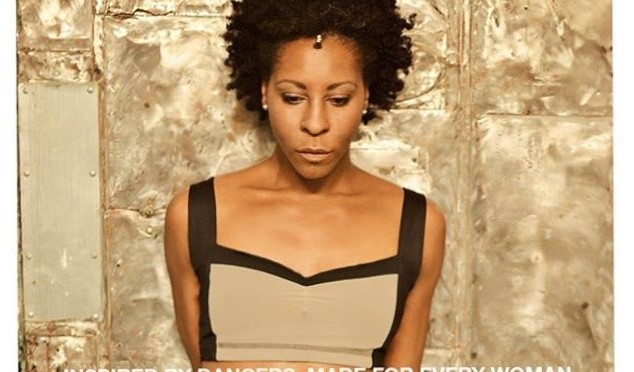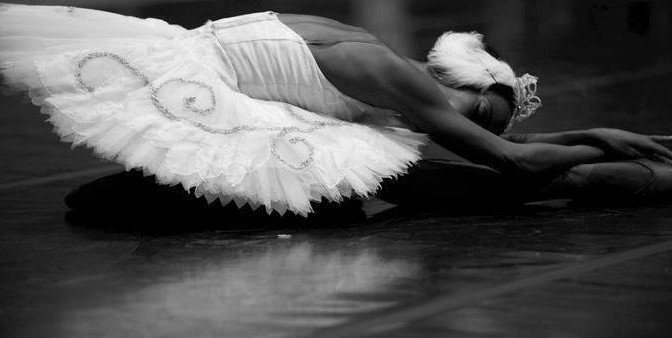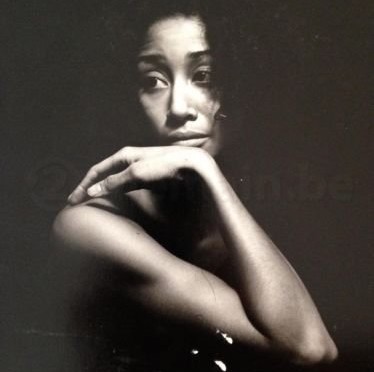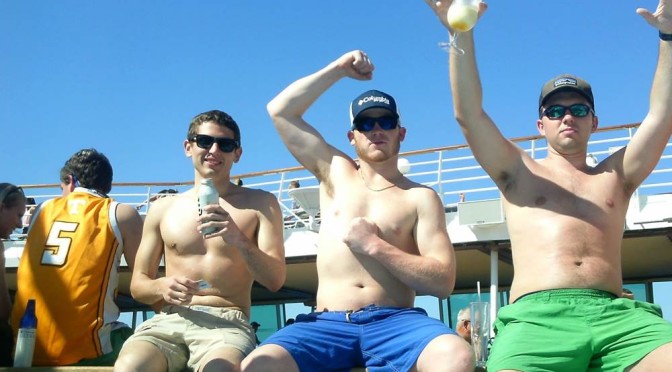On June 18th, 2015, I was very honored to be a speaker at the Dance/USA conference in Miami Florida at the Adrianne Arsht Center as a part of Race and Dance Townhall: REAL TALK Part 1. I was invited by Michelle Ramos Burkhart who was curating several sessions for the conference as a part of Dance/USA’s attempt to address the topic of race and diversity. She had read my article ‘The Misty-rious Case of the Ballerinas of Color: Where have they gone?’ and was interested in having me speak about it. I have to admit, although I was honored that the piece was gaining traction, I was apprehensive about the idea of attending, let alone being on a panel discussing the issue, at a ”conference”. Let me explain. I am a cynic, and in my experience, that cynicism I speak of is well placed, as almost every “talk”, “town meeting”, or “panel discussion” I have attended has always left me feeling like I had just witnessed a circle jerk (it is a crude reference, but it’s on point). If you have ever attended one, then you know exactly what I mean. Let me introduce the cast of characters:
The Moderator – who moderates either too little or way too much.
The Academics – who are talking to themselves, they come off as superciliously wanting to alienate those not of their intellectual ilk or of the “Academy”. Where they bring great points, their presentation seldom moves the conversation forward as much as around in circles (that generally revolve around them).
The Historians – who are not so much enamored with themselves (as are the Academics) but with their information, they often have trouble effectively tying that information into the conversation.
The Droner – someone either on the panel or in the audience who goes on and on. You pray that the moderator will cut them off, but they never do, and people start to get uncomfortable, shift in their seats, kick the person next to them, smirk, or sigh under their breath.
*This is only my exaggerated perception of these events, this is how they come off to me I told I am a cynic..
Another issue I have with these scenarios is that they are seldom honest, organic conversations, but more D@$k swinging contests where nothing revelatory happens, just a regurgitation of the obvious. In the end, I felt like I was at the Nickelodeon Kids Choice awards…slimmed.
I did not want to be an active part of that motley crew.
Another reason I was a bit apprehensive about participating was because of my reputation for being brutally honest, albeit with a great deal of wit and humor (a spoonful of sugar helps the medicine go down, but even still). I have the ability to lance the chest and spear the heart with my honest observations. It took a great deal of thought to find the right tone for my article, ‘The Misty-rious Case of the Ballerinas of Color: Where have they gone?”. Finding the best way to express sentiments about the Misty Copeland narrative that were rumbling in the community for a *long time and not have it read like an attack was an exercise, both as a person and a writer. When I clicked “Publish”, I thought that I would have to enroll in the witness protection program. To have received no backlash from it has left me slightly incredulous. Where I have confidence that I can be that judicious and diplomatic in the privacy of my writing space in a live conversation? I’m not so sure. When impassioned, there is no telling what might be propelled off of my tongue. I was not certain that I had reached that level of buddhistic mastery in this area, so the idea of participating on this panel gave me pause.
Denise Saunders Thompson (Chairperson/Executive Director of International Association of Blacks in Dance) and I became acquainted through an anointed faux pas. She arranged an “invitation conference” call with Burkhart so the three of us could flesh out what these sessions would really address. I voiced my concerns, the largest being that every time you have a gathering to talk about race, diversity, or lack of fair representation, the people who are in control of, and who perpetuate the issues are NEVER present. They never have to be accountable, or bear responsibility for their actions or non actions. We, the congregation end up singing an old hymn to the same choir…and we all know the words. This scenario is as classic as ballet itself, as traditional as the corps de ballet being various shades of pink: I have always found their unwillingness to engage the subject with the “subjects” dismissive, reductive, and a clear indication that they just don’t give a damn. I operate under a simple premise that has been illustrated through time: people show up for what matters in their lives – people make time for what matters to them, and they don’t when it doesn’t. #hesjustnotthatintoyou. What usually results in these gathering is a room full of people who are afraid to call out those in power and tell it like it is (in public). It’s like a verbal version of that game “Mad Libs” where the lengthened pause means “insert proper noun here”.
My other issue (as I write, I see that I have a lifetime subscription) was that often you can gauge just how useless a session is going to be by the racial composition of the room. Generally, there is a room full of brown people with sprinkles of well-intentioned white people who are either brave enough to be present, or who think that their ability to be in a room full of soon-to-be-heated Black people talking about very charged and painful things “says” something about who they are, how “liberal” or “down with the cause” they may be (raise fist here). And where this might be, most of the time it’s all for naught because everyone in attendance already agrees. There *is no real “debate”, just head nodding and an occasional “amen”. The wrap up generally consists of the questions, “So what do we do now? Where do we go from here?”, and since the people who have the power to make the changes are nowhere to be found, the answers are the same: nothing and nowhere! Once again, the proverbial tree of issues has fallen in the forest, and the only people to hear it are those who chopped it down. I knew that this was an important invitation, and it would put my work on the “national” stage, but I was not so sure that I wanted to play to that particular house.
After hearing my concerns, I was told that last year the composition of attendees was quite diverse, and that a great effort would be made to have some of the people with the power in the room. Once I was on board, there were several conference calls with Amy Fitterer (Executive Director of Dance/USA), Burkhart, Thompson and my fellow panelists, Kaisha Johnson (Women of Color in the Arts WOCA) and Tanya Wideman David (Assistant Professor at University of South Carolina and Co-Artistic Director of Wideman/Davis Dance, also former DTHer). We worked to clarify what we wanted these sessions to address and important points. The second session, which was to address the funding of diversity initiatives, presented some problems. I was clear that I wanted to talk about the efficacy and sustainability of programs like ABT’s Project Plié and the New York City Ballet diversity initiative that the organization is actively seeking Black representatives for. (To do what exactly? To date, no one, not even the people who have been contacted, and who have agreed to participate, seem to know…you see, this was my point). There was talk about a number of diversity/funding issues surrounding choreographers and companies of color. In the end, after coming back from the Grantmakers in the Arts conference Fitterer found a different direction for the second half to follow. Therefore, I will only talk about the first session that I personally actively participated in.
I was nervous going in. It was my first foray into these waters and it was primed for missteps. However, I have to say that having some friendly faces there was a comfort. I was thrilled and surprised to see that Tina Williams, former Ailey dancer is now the Director of Facility Rentals at the Arsht center. Seeing her face made me feel bit at home upon entering the Arsht center in the morning. As I made my way to our conference room, I was soothed to see Lane Harwell from Dance/NYC (who I know from another life) and Jenny Stahl (Editor in Chief of Dance magazine who I met when she had just graduated from NYU and started working at DanceMedia) were attending. Then there was also Anjali Austin (a former DTHer and Associate Professor of Dance School of Dance Florida State University), Michelle Ramos Berkhart’s daughter, Ellenore Scott (a former Ailey student of mine turned company director, ELSCO) and of course Denise Saunders Thompson. Their presence helped me navigate these uncharted waters as they sat in the audience. If it makes any sense at all, where I did not feel ready, I did feel prepared because there were elements of my past, present, and no doubt my future, in those seats.
Burkhart opened and asked me to give a brief synopsis of the article, why I wrote it, and the response to it. However, before I got into that, I had to ask the audience a very important question and offer the participants in the room the opportunity for us to enter into an agreement together. I told the audience that I believed that the United States is in this racial maelstrom today because we as a society are unwilling to have an honest conversation about race. A conversation that is messy, and scary and full of anger, resentment, blame, frustration, rage, ugly truths, and guilt which are the by-products of a culture created and rooted in systematic racism. I told the White people in the room, “I know that your first response when you hear certain things is to deflect, or become defensive, but I ask that, on this day will you/ we commit to working to stay open, to listening and letting it land. Hear it, don’t push it away, or make rationalizations. Take it as a truth that you never knew, could not know existed because you are White. Take what is being said as authentic feelings based in a reality that you cannot, will not “understand”. Where it will feel personal, try not to take it personally. And as Black people, it feels personal and we are going to try to move past that feeling to get to the greater possibility. I ask that we collectively try to have this courageous conversation, and authentically look at the reality as difficult as it might be, and if we could not, then we should all just go to the pool now and have a cocktail”. We all agreed…
What transpired in the next 90 mins was interesting. Quite honestly, I can’t comment on whether or not people in the audience had the feeling that I get when in their position, but I will say this, it seemed as if something had opened up when we finished. We started with my article, and Tanya Wideman Davis brought in the reality of the trope of the ballerina, the aesthetic, and the mythology of her (pure, chaste, ideal beauty) and the idea that Black women, and our bodies historically (and presently) have never been allowed to be perceived that way – the black female body has always been portrayed as “deviant” and “sexualized”. I brought up how stressful it is to be Black in America, living knowing that you are enemy #1 and constantly having to *prove that you are not the “stereotype” of your race. I added the fact that as a little brown girl (or boy) stepping into the extremely white world of ballet, you not only bear the responsibility of becoming proficient in the technique, but you must do so while carrying the weight of your race on your back. Little white girls don’t have to struggle under that burden. I added, we [Black people] know that we are not supposed to be there because we do not see ourselves there — not as teachers, administrators, not even as receptionists. We talked about the “D word”, diversity…I charged them, “If you want to know how you are doing in terms of diversity, just look at your life, look at your friends, your office, your school, programs, organizations and companies…Diversity is not hard”. I said, “You don’t have to have a lot of money, or an initiative to create diversity…all you have to do is open the door and welcome people in”. Several audience members added their thoughts, including a woman who is the sole African American booking agent in the state (yes, the state) of Florida, who finds herself being what I call the “Negroscope” for companies, presenters, and theaters alike when they are trying to “diversify”. Another women (white) spoke about not realizing the realities of the stress of being black, and how she longed to ask questions but friends always tell her “You can’t ask that!”. I (along with others in the room) poo pooed that notion. I encouraged her that any question asked authentically and with good intentions is usually fine. Denise Saunders Thompson, broke it down to money and vision–when she said that it really boils down to “ Look who gets, the funding…the way the Artistic directors of companies see things, because it’s their vision that we are seeing – until that changes, none of this will change.”
Toni Pierce (former Ailey dancer and Co-Founder and Artistic Director of TU Dance) mentioned the number of Black ballet dancers in Modern companies and the idea that there were some who never wanted to be ballet dancer, which spoke to the elitism of the world of Ballet as better.. Davis also talked about the validation that Black ballet dancers seek from White companies…it got deep, it was a rich and vibrant discussion from where I sat, but hell, I was already over stimulated…
As we wrapped up the session, I announced the launch of museumofblacksinballet.org, a digital archive of Black Ballet dancers I am creating, and I took the opportunity to do our first “flash MoBB” where I asked everyone to connect to the site at once. The Museum of Blacks in Ballet project is in direct response to what I wrote about in my article. One reason the erasure of a legacy of black ballerinas can occur is because of the inefficient and inaccessible archiving and documentation of that history (we’ll deal with the idea that the contributions of Black people to history across the board is often diminished or overlooked later). I, along with my partner Phil Chan, have decided to try our best to contribute to the solution. Please check it out, we are still in the building stages, but take moment to scroll the Roll Call, in itself is a moving tribute. There will be more to come as we build out the site, so please keep checking in and if you are so moved, become a member and donate!!!
For me, those were the highlights, and I have to say that the room was charged and full of optimism…not to sound crass, but it always is, it’s like post coital endorphins are released…I was very pleased to know that the following people were all in attendance:
Glenn McCoy, Executive Director, San Francisco Ballet
Ellen Walker, Executive Director, Pacific Northwest Ballet
Kathy Brown, Executive Director, New York City Ballet
Doug Singleton, Executive Director, Charlotte Ballet
C.C. Conner, Managing Director Emeritus, Houston Ballet
Afterwards, I had the opportunity to speak with Mr. McCoy, Ms. Walker, and I believe Mr. Conner. We all agreed that we should continue the conversation and that Ballet companies can benefit greatly by engaging in a dialogue with the Black dance community. I look forward to the possibilities.
I have to say that over all I had a surprisingly wonderful experience; I reconnected with some people who I have not seen in years (decades) and I had a great communion with Kaisha and the WOCA women who are powerful, inspiring and hella entertaining…sisters in all forms of the word…
It has been a few weeks since the conference, and I have checked in with a few fellow speakers and attendees and we all have the same question: “Do you think anything is going to happen? Do you think anything is going to change?”. I can say that only time will tell, but I will also say that I will be holding folks accountable. We have reached critical mass, and as a people, we are sick of being a faddish initiative, or a charity case. If you say you want diversity, then you have to work for it. It’s not going to happen “organically”; the world we live in is socially “organic” and you see how that’s working for us. So if you want it (and all the funding money that comes with it) then roll up your sleeves, pull your waders on, and let’s get to work. This, [racism, lack of diversity] in this country is not Black people problem (we did not create it, we do not sustain it, though we live under it) this is a White people problem and only White folks can solve it*. Talk is cheap, let’s get to action, movement, and since as dancers that’s what we do, it shouldn’t take long for us to get the combo…so 5,6,7,8, ready on the 1.
* I’m not saying that Black people don’t have to contribute to the solution but the larger work, or inclusion, sharing or resources, equality of opportunity are for White people to do their work within themselves to solve, then we can really get somewhere….

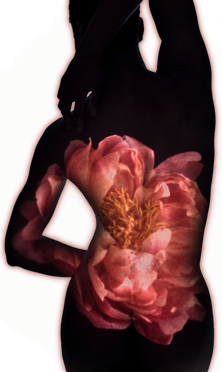
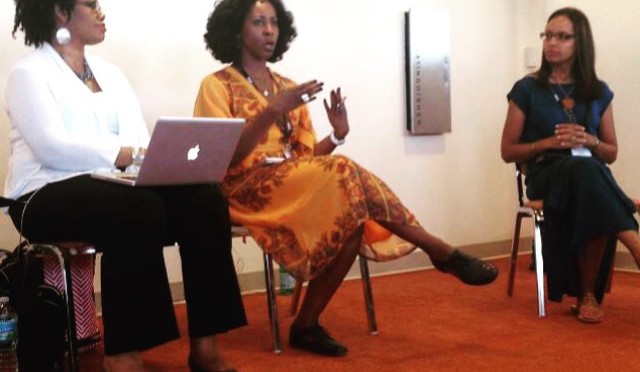
![Sandra Bullock speaks on the [media] attack on women](https://mybodymyimage.org/wp-content/uploads/2015/07/sandra-436162-500x375c-500x372.jpg)

